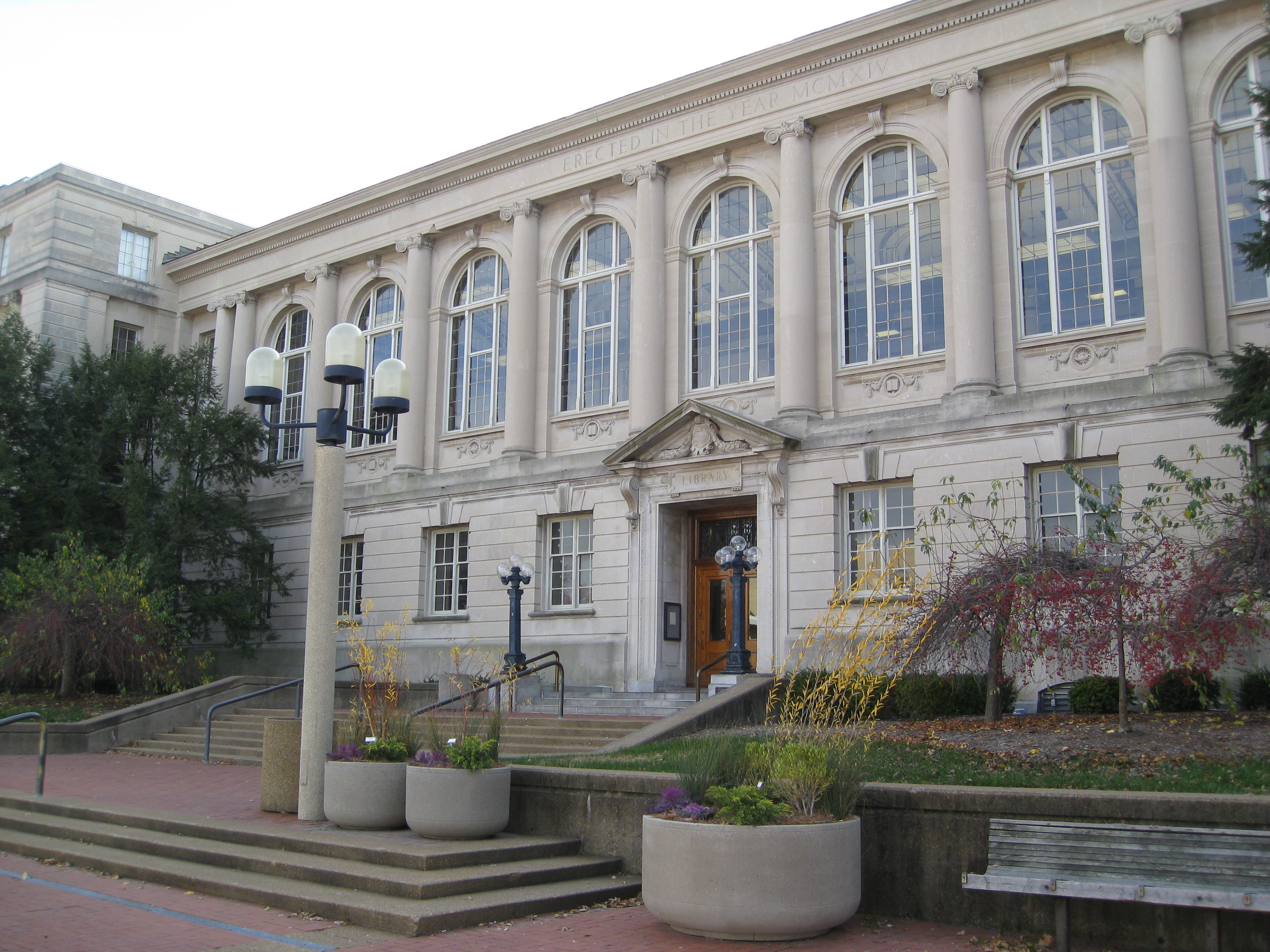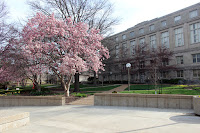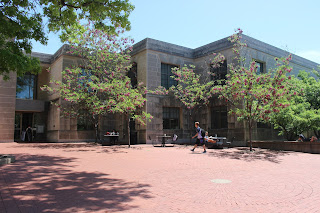Note: This was originally written as a class project. Normally I take these down because yuck, who wants their homework online. But I thought this wasn't terrible so I'm saving it for posterity here.
James Gleick’s The Information is a broad scale “history of everything” book, similar to J. M. Hecht’s Doubt: a history or Y. N. Harari’s Sapiens: a brief history of humankind. Gleick traces the history of our understanding of information, from pre-history to modern times. In my first drafts of this review, I found myself wanting to share too much about everything I learned. Hopefully I’ve whittled it down enough to give you a taste of what he explores, to whet your appetite to read the book yourself. Although I enjoyed the book, I have some critiques, as well as some thoughts about our relationship with information in general.
Alphabet Soup (pre-history to the 1800s)
The Information is subtitled “a history, a theory, a flood”, and the book is structured in roughly these three parts. He begins with the development of the alphabet, differences between orality and written language, and the conceptual framework that arises from the act of transmitting spoken words to written. This early sea change in thought means “information has been detached from any person, detached from the speaker’s experience. Now it lives in the words, little life support modules” (p.39). Eventually people began to standardize these ‘life support modules,’ and thus the dictionary was born – although, he notes, “the word dictionary was not in it” (p. 57).
Enter Babbage (1800s – early 1900s)
Charles Babbage’s calculating machine is the first major turning point in the book. Inventions appear at a rapid pace, and what historically was only categorized (via dictionaries, etc) is beginning to be theorized about. Information became more tangible, with specific effects on the world.

“As [Babbage] looked to the future, he saw a special role for one truth above all: ‘the maxim, that knowledge is power.’ He understood that literally. Knowledge ‘is itself the generator of physical force,’ he declared. Science gave the world steam, and soon, he suspected, would turn to the less tangible power of electricity: ‘Already it has nearly chained the ethereal fluid.’” (p. 124).
Just as an understanding of forces and motion led to the theory of physics, the development of alphabets, to writing, to various methods of communication, coalesced to a theory of information. The increasing speed of information transmission had widespread ramifications, including the standardization of time, and new attempts to manage the amount of messages being sent. Codes come to the forefront, not just in the actual transmission via Morse code as a way to secure the public messages. A new concept, encoding, became familiar. As Gleick writes,
“The Morse scheme took the alphabet as a starting point and leveraged it, by substitution, replacing signs with new signs. It was a meta-alphabet, an alphabet once removed. This process—the transferring of meaning from one symbolic level to another—already had a place in mathematics. Now it became a familiar part of the human toolkit” (p. 152).
Characteristica universalis (1900s and onwards)
Claude Shannon and information theory are nearly synonymous. His theory, based on his work with cryptography and symbolic logic, consisted of four key points: “uncertainty, surprise, difficulty, and entropy” (p. 219). In essence, Shannon asked, what does information help you know, and what are the barriers to this? His further work on communication, defined as “reproducing at one point either exactly or approximately a message selected at another point” (p. 221), was broad, covering all of human and non-human behaviors. Computers could be interpreted using communication theory.
In the aftermath of World War II, numerous fields outside computer
science and cryptanalysis were reinterpreted in the light of information
theory. This happened in the aftermath of innovations from during and
directly after World War II: Computers entered the public domain, Von
Neumann created game theory, Alan Turing created his Turing test.
Psychology entered a new era as behavioral psychology fell out of
fashion – “[The behaviorists’] refusal to consider mental states became a
cage, and psychologists still wanted to understand what the mind was.
Information theory gave them a way in” (p. 258). Here and in other
fields, information theory became ubiquitous.
 Rosalind Franklin at her microscope. Photo by Jenifer Glynn. CCA-SA.
Rosalind Franklin at her microscope. Photo by Jenifer Glynn. CCA-SA.Perhaps no scientific enterprise was harder hit than biology. With the discovery of the structure of DNA (shamefully, Gleick fails to mention Rosalind Franklin’s crucial contribution), the very conception of how life functions could be interpreted according to the theory of information – transferring information via genes, mutations, and how entropy affects DNA. Gleick writes, “Where then, is any particular gene—say, the gene for long legs in humans? This is a little like asking where is Beethoven’s Piano Sonata in E minor. Is it in the original handwritten score? The printed sheet music? . . . The music is the information. Likewise, the base pairs of DNA are not genes. They encode genes. Genes themselves are made of bits” (p. 309).
“Most of the biosphere cannot see the infosphere; it is invisible, a parallel universe humming with ghostly inhabitants. But they are not ghosts to us—not anymore” (p. 323).
The final iteration, before Gleick considers some of today’s ramifications of information theory, is quantum information theory, where quantum mechanics is revealed to have information theory at its base. “Why does nature appear quantized?” Gleick asks. “Because information is quantized. The bit is the ultimate unsplittable particle” (p. 357). Quantum effects could be used for information processing – “Quantum error correction, quantum teleportation, and quantum computers followed shortly behind” (p. 363).
Aftermath (today)
Information, quantum or not, is everywhere, and it is overwhelming. “The persistence of information, the difficulty of forgetting, so characteristic of our time, accretes confusion” (p. 373). This is not a new problem – H.G. Wells in his 1937 essay “World Brain” attempts to solve the influx of information through the creation of a world encyclopedia. Wells wrote,
“Few people as yet, outside the world of expert librarians and museum curators and so forth, know how manageable well-ordered facts can be made, however multitudinous, and how swiftly and completely even the rarest visions and the most recondite matters can be recalled, once they have been put in place in a well-ordered scheme of reference and reproduction” (para. 5).
Few people today, other than information professionals, understand this. The Information is a critical text to learn more about how we came to think the way we do about information. By understanding our past, we can better grasp our next steps into the future. Today’s flood of information is more approachable because we now know it is grounded in tenets put forward by early theorizers. We are not alone in being overwhelmed by the quantity of data – Gleick even references a viral message that was distributed in 1933 — and we have new strategies we can use.
Some methods of data management would have been unbelievable even a century ago. Crowdsourcing has given us Wikipedia, which compiles information, evolving and self-correcting until its value surpasses standard encyclopedias. Compare this to an early form of crowdsourcing, writing the Oxford English Dictionary, where individuals mailed data about definitions to the editor until the floorboards of the office needed to be replaced (for more information, see Simon Winchester’s The Professor and the Madman). All this for a dictionary–imagine the attempt to manually create an encyclopedia the size of Wikipedia via the mail.
Despite the breadth of Gleick’s book, there are glaring oversights. I briefly mentioned Rosalind Franklin’s absence above; this is only one example of his tendency to ignore the role of women. Ada Lovelace is the only woman to have her theories somewhat developed; Margaret Mead is mentioned in passing, and the rest of the women are mentioned only as the wives of the key players.
His book is entirely western-centric. The only exception to this rule is in his first chapter, which uses the African drums to introduce ways of thinking of information transmission. In some ways this is due to how westernized information theory is – expanding the scope to include eastern schools of thought on skepticism and the nature of information might have been too broad for one book. I recommend Doubt: a history as a counterpoint.
The Information is written as a progression of ideas leading to a higher endpoint, and I think there was an opportunity here to critically think about why some schools of thought might not agree with the concepts of information theory, and how different perspectives might interact with it. Pankl and Coleman’s (2010) definition of positivism is a good starting point for critiquing this style of history-writing: “Positivism is the belief and practice that valid knowledge is objective, empirical, and static” (p. 4). Although their article is written in the context of librarians’ interactions with students in the research cycle, it gave me a lot of food for thought regarding how Gleick reported his own research. While seeming exhaustive, Gleick’s worldview left out a great deal of the story.
In a similar fashion, Gleick fails to examine the contextuality of information. As a brief example, Buckland (1991) provides examples of things that used to be considered information that are no longer (“ducking” women to determine if they are a witch) and things that would not be considered information in the Claude Shannon sense (antelopes). In essence, Buckland argues, “We conclude that we are unable to say confidently of anything that it could not be information” (“When is Information Not Information?”). Paradoxically, Gleick’s book expanded my mind about how to treat information (by discussing Shannon’s information theory and its ramifications) while also remaining too narrow in focus.
The Information is an excellent starting point, but it is only a starting point. I hope that whether the person reading this is an information professional or a layperson, they use this as a framework to reconsider how they interact with the information in their world. Perhaps there will soon be a follow-up to address the gaps in this book and expand the concept beyond a male, western-centric scope.
References
Buckland, M. (1991). Information as thing. Journal of the American Society of Information Science 42(5). Retrieved from http://people.ischool.berkeley.edu/~buckland/thing.html
Gleick, J. (2011). The information: A history, a theory, a flood. New York: Pantheon Books.
Pankl, E., & Coleman, J. (2010). ‘There’s nothing on my topic!’ Using the theories of Oscar Wilde and Henry Giroux to develop critical pedagogy for library instruction. In M. Accardi, E. Drabinski, & A. Kumbier (Eds.), Critical library instruction: theories and methods (pp.
Wells, H. G. (1937). The idea of a permanent world encyclopedia. ischool Berkeley. Retrieved from https://sherlock.ischool.berkeley.edu/wells/world_brain.html


